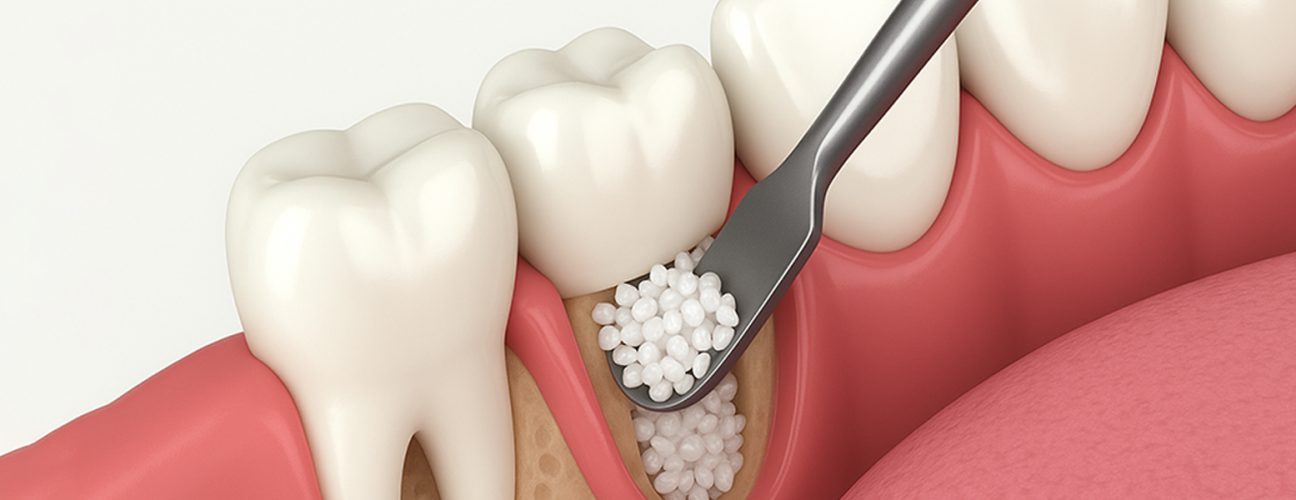Pain Free Root Canals
Pain 2 Weeks After Dental Bone Graft: When to See Your Dentist
May 1, 2025Healing after a bone graft follows a set process. Mild discomfort during the first few days is common, but ongoing pain raises concern. If soreness continues or worsens, it signals the need for an evaluation. Recognizing normal healing versus potential complications helps ensure a smooth recovery. Swelling, tenderness, or mild throbbing often subsides as the body repairs itself. When pain lingers or returns after early improvement, it could mean an issue that requires attention.
What to Expect After a Bone Graft?
A bone graft helps rebuild support for future dental procedures. Whether for implants or other restorations, this step strengthens areas affected by loss. Post-procedure discomfort usually fades within a week, with proper care promoting steady healing. Tenderness, minor swelling, and sensitivity near the surgical site occur initially. Following aftercare instructions helps prevent infection and supports the body’s natural recovery process.
Normal healing signs include:
Gradual decrease in pain over the first week
Minor swelling that peaks within 48 hours, then reduces
Light bruising near the area
Mild discomfort when chewing
Why Is There Pain 2 Weeks After a Dental Bone Graft?
Some discomfort may persist, but intense or increasing pain should not be ignored. Pain 2 weeks after dental bone graft can indicate:
Infection: If bacteria enter the healing site, swelling, warmth, and pain may increase.
Inflammation: The body’s response to healing can sometimes extend longer than expected.
Graft Rejection: This is Rare, but in some cases, the body may not integrate the graft properly.
Dry Socket: If the blood clot dislodges too soon, severe pain may develop.
Sinus Complications: Upper jaw grafts may irritate the sinus lining, causing discomfort.
If sharp pain, excessive swelling, or pus appear, seeking immediate care prevents further complications.
When to Seek Help from a Dentist?
Some discomfort is normal, but persistent or worsening pain needs professional evaluation. A dentist in Arlington, TX, assesses whether healing is on track. Call for an appointment if you notice:
- Intense throbbing or sharp pain beyond two weeks
- Swelling that does not subside
- A bad taste or foul smell in the mouth
- Fever or general unwell feeling
- Gum discoloration near the graft site
Ignoring these signs may cause bigger issues. A quick visit ensures that healing continues properly.
Preventing Post-Graft Complications
Keeping the graft area clean and avoiding strain improves recovery. Simple steps to protect the site:
Stick to soft food items for at least two weeks
Avoid smoking or using straws, as suction can disrupt healing
Follow the prescribed antibiotics to prevent infection
Maintain gentle oral hygiene without disturbing the area
Healing varies, but with proper care, most grafts integrate successfully.
Gum Disease and Bone Graft Healing
If a graft is done due to previous gum issues, recovery may take longer. Gum disease treatment in Arlington supports the healing process by reducing bacteria and strengthening the surrounding tissue. Routine checkups ensure the gums remain healthy and free from inflammation.
Final Thoughts
A bone graft sets the stage for future dental work, but healing should progress smoothly. Lingering or worsening pain beyond two weeks signals the need for professional attention. With expert care from Apple Dentistry Arlington, the site can heal properly, ensuring a strong foundation for future treatment. If discomfort persists, visiting a trusted provider helps prevent complications and supports lasting oral health.

Abour Dr. Kamalpreet Shallu
Dr. Kamalpreet Shallu is a dedicated general and implant dentist with advanced credentials, including a Fellowship in Implant Dentistry, Invisalign certification, and specialized training in guided implant surgery (Nobel), wisdom teeth extractions, fixed dentures, and All-on-X implants. Committed to delivering personalized, patient-centered care, Dr. Shallu combines clinical expertise with the latest dental technologies to help patients achieve healthy, confident smiles.

